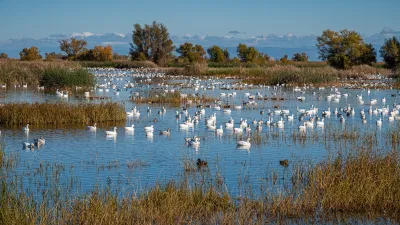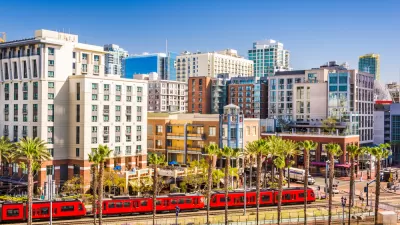Funds will be used to support water, wildfire prevention, environmental, and park projects, reflecting strong public support for climate resilience.

California voters have approved Proposition 4, a $10 billion bond measure focused on financing projects to bolster the state’s climate resilience and environmental health. This landmark measure dedicates $3.8 billion toward water initiatives, including efforts for safe drinking water, water recycling, groundwater storage, and flood management. Additionally, the bond sets aside $1.5 billion for wildfire prevention and $1.2 billion for protecting coastal areas from rising sea levels. The proposition also directs funds toward creating parks, wildlife habitat protection, air quality improvements, extreme heat mitigation, and support for sustainable agriculture.
As reported by Melody Petersen, the measure garnered significant support from environmental groups, social justice organizations, labor unions, and renewable energy industries, all of whom advocated for the bond as a critical investment in California’s future. Liz Forsburg Pardi, the California policy director at the Nature Conservancy, expressed gratitude for voter approval, stating it reflects a strong commitment to climate resilience. Proponents argue that these projects will help prevent the devastating impacts of environmental disasters like wildfires and erosion, which are predicted to worsen as climate change progresses.
While widely supported, the bond measure also faced opposition from taxpayer groups like the Howard Jarvis Taxpayers Association, which argued that funding these projects through bonds would ultimately cost the state more in interest payments. According to the Legislative Analyst’s Office, the bond will cost taxpayers $400 million annually over the next 40 years, totaling $16 billion. Critics contend that the state could have pursued more fiscally responsible funding alternatives, yet the measure’s passage indicates voters’ prioritization of environmental sustainability over concerns about debt.
FULL STORY: California voters approve Proposition 4, the bond measure for water and environmental projects

Alabama: Trump Terminates Settlements for Black Communities Harmed By Raw Sewage
Trump deemed the landmark civil rights agreement “illegal DEI and environmental justice policy.”

Study: Maui’s Plan to Convert Vacation Rentals to Long-Term Housing Could Cause Nearly $1 Billion Economic Loss
The plan would reduce visitor accommodation by 25% resulting in 1,900 jobs lost.

Why Should We Subsidize Public Transportation?
Many public transit agencies face financial stress due to rising costs, declining fare revenue, and declining subsidies. Transit advocates must provide a strong business case for increasing public transit funding.

Paris Bike Boom Leads to Steep Drop in Air Pollution
The French city’s air quality has improved dramatically in the past 20 years, coinciding with a growth in cycling.

Why Housing Costs More to Build in California Than in Texas
Hard costs like labor and materials combined with ‘soft’ costs such as permitting make building in the San Francisco Bay Area almost three times as costly as in Texas cities.

San Diego County Sees a Rise in Urban Coyotes
San Diego County experiences a rise in urban coyotes, as sightings become prevalent throughout its urban neighbourhoods and surrounding areas.
Urban Design for Planners 1: Software Tools
This six-course series explores essential urban design concepts using open source software and equips planners with the tools they need to participate fully in the urban design process.
Planning for Universal Design
Learn the tools for implementing Universal Design in planning regulations.
Smith Gee Studio
Alamo Area Metropolitan Planning Organization
City of Santa Clarita
Institute for Housing and Urban Development Studies (IHS)
City of Grandview
Harvard GSD Executive Education
Toledo-Lucas County Plan Commissions
Salt Lake City
NYU Wagner Graduate School of Public Service





























